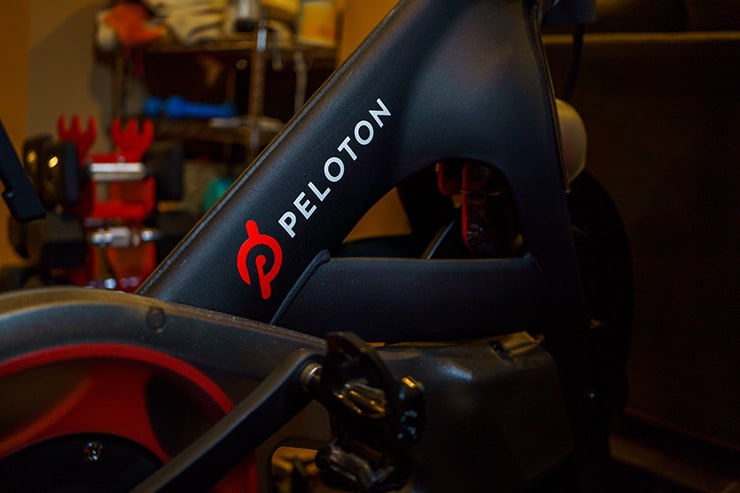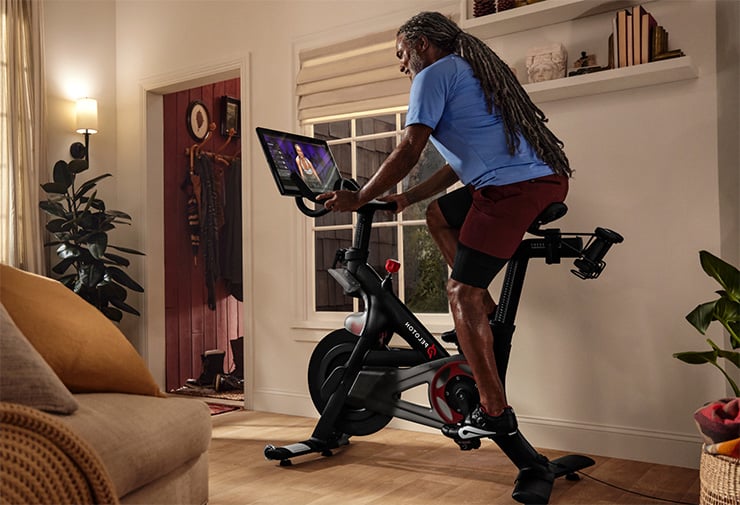Clicking noises from a Peloton indicate that something is off-kilter with your bike. Identifying the source of the clicking will help you to troubleshoot the problem area properly and banish the annoying sound. You’ll be riding smoothly again in no time.
Key Takeaways
- Clicking noises from a Peloton bike indicate that something is off-kilter with your bike, and you need to identify the source to troubleshoot the problem area properly.
- The most common reasons for clicking noises are loose cleats, pedals, handlebars, or crank arm, which can be fixed by tightening them with an allen wrench or a bike lube spray.
- If the clicking noise is coming from the flywheel, it may indicate damage to the flywheel bearing or the internal chain. Contact Peloton customer service for assistance.
- Peloton bikes require regular maintenance to prevent clicking noises and other issues.
- Peloton offers a warranty on all bikes. Only attempt to fix the clicking noise yourself if you are certain that your bike is no longer covered under the warranty.
Why is my Peloton Making a Clicking Noise?
Clicking noises coming from a Peloton is an indication that something is off kilter with your bike. Identifying the source of the clicking will help you to effectively troubleshoot the problem area and banish the annoying sound. You’ll be riding smoothly again in no time.
Wear and Tear
Each time you mount and ride your Peloton, you’re putting lots of pressure on the frame. Over time, the screws and bolts holding the machine can become loose simply from regular use.
Loose Cleats
You need to make sure your cleats are properly positioned every time you ride your Peloton bike. If you notice the noise is coming from the pedal area, your Peloton shoes may not be tightly hitched to your pedals.
Loose Pedals
With time and use, your pedals can also wiggle loose from their base. Get level with your pedals and check to see if they are wigglier than before. It could be that just one pedal is loose. If you are right footed, it is likely your right pedal is loose. If you’re left footed, pay extra attention to your left pedal.

Damaged Peloton Flywheel
Your flywheel is the 35 pound front wheel that makes up the majority of the weight of your bike. As you pedal, the chain connects to gears that move the flywheel. Clicking from this frontal zone likely indicates damage to this flywheel, which is more serious. Peloton support can get this situation figured out for you.
Misaligned Crank Arm
The crank arm is the lever your pedals attach to. Your crank arm could be loose or misaligned, which can be noisy as it means the internal chain could not be turning properly. The crank arm usually sits at a specific right angle, so any change to this angle could be the culprit.
Misuse
It’s important not to strain your bike by putting too much pressure on it. Spinning too rigorously or improperly pedaling can all lead to clicking noises. Make sure you are using the recommended resistance settings for your height and weight. The bike frame is typically pretty sturdy, but the other parts are prone to damage with such misuse.
Uneven Surface
If your bike is placed on an uneven surface, the legs of the bike could be tapping onto the floor as you pedal. Be sure to put your bike evenly on a carpeted surface or bike mat to combat this issue.
How to Stop Your Peloton from Clicking
The truth is, Peloton clicking noise is a sign of an issue at bay. There is a 12-month Peloton warranty on all Peloton bikes. Therefore, if your bike is acting up within this warranty, do not try to fix the clicking sound yourself as you could void the warranty.
Peloton also offers extended warranties. If you purchased the extended warranty, you should look into how long the warranty lasts. If this is the case, contact Peloton customer service. They will help guide you through the process or send a technician to help you.
Below, we’ll guide you through the steps on how to fix a clicking noise yourself. Remember, you should only attempt this if you are certain that your bike is no longer covered under the warranty.
What You Will Need to Tackle the Clicking Noise:
Note that the tools you need will vary depending on the source of your clicking noise. Generally, the following tools will do the trick to fix a clicking noise. When you purchase a Peloton bike, it comes with a maintenance box equipped with an allen wrench and bolts.
- Screwdriver
- Allen wrench
- Hex key
- Lubricant spray
- Washers (for tightening cleats)
First: Diagnose Where the Clicking is Coming From
As with all machines, you need to first get an idea of where the noise is coming from. Improperly diagnosing the problem can get you in a lot more trouble than need be. Above, we’ve laid out where you should listen for clicking so you can properly attempt to fix the noise. The following steps will also guide you through the most common reasons for off sounds.
Next: Make Sure Cleats are Tight
This is one of the most common reasons for ticking noises while riding. As your cleats need to snap into the bolts every time you ride, normal friction can cause the bolts to become loose.
Grab a hex key, your screws, and your washers and tighten the cleats. Check out the video below from Peloton’s official channel for help. Peloton users are recommended to tighten their cleats frequently.
Third, Look at Your Pedals
As mentioned before, your Peloton pedals should be tightened all the way to ensure a smooth and soundless ride every time. Pedals can come loose with normal use. In order to tighten your pedals, grab your wrench and follow these steps:
- Turn your resistance knob all the way to the right.
- Make sure the pedal is level, not inclined.
- Use the wrench to grasp onto the knob connecting the pedal to the crank arm.
- Turn the wrench on your right pedal all the way to the right, until no longer possible. Be sure not to over-tighten.
- For your left pedal, turn the wrench all the way to the left.
Watch the video below from Peloton for a visual aid. You’ll see how simple tightening your Peloton bike pedals is. The clicking noise should disappear and you’ll be back to smooth pedaling. Remember to check your pedals frequently – it’s part of routine maintenance!
4. Tighten Handlebars
Wobbly handlebars could be the culprit to the pesky clicking noise coming from your Peloton bike. Surprisingly, wobbly or shaky handlebars is one of the most common issues that Peloton users have.
As the Peloton bike is a quality machine, many users complain that this shouldn’t be a problem. Regardless, tightening the handlebars is an easy way to troubleshoot for that clicking sound.
If you have raised the handlebars higher than the N mark on your bike, this is usually the reason why the bike starts to wobble.
How to tighten your Peloton handlebars in three simple steps:
- First, ensure your adjustment knob is turned all the way to the right. This is located below the handlebars and is different from the resistance knob.
- Use an allen wrench on the bolts on the stem of your handlebar. Turn the bolts to the right to tighten.
- If your handlebars are wobbling with the screen, locate the crank bolt behind the handlebars lever. Tighten this bolt in the same way you did previously.
5. Tighten Crank Arm
If the clicking noise sounds like it’s coming from your pedals, but tweaking the pedals didn’t do the trick, it’s likely a Peloton crank arm noise. This is usually a result of loose bolts in the crank arm or a dried out crank arm due to debris from your cleats. In this case, you should take out your allen wrench again and get to the tightening! REmember, righty tighty to get those bolts tight as possible.
Lastly, you can use bike lube spray to grease the crank arm and pedal threads. A light spray is all you need to alleviate the issue. If not, call Peloton to see if they can send you a new crank arm.
6. Last Resort: Contact Peloton
In the case that none of the above has alleviated the clicking noise, your flywheel may be the origin of the noise. The flywheel bearing could have fallen which results in a clicking or squeaking noise from the front wheel. Another problem in the interior of the bike could be causing this clicking sound.
In this scenario, you should contact Peloton customer service. Send them a video in which you can hear the noise. Peloton may send a technician or mail you new bike parts if needed. If it’s past your warranty, you will have to purchase the replacement parts, but Peloton will send you an instructional video on installment.
Frequently Asked Questions
Peloton bikes are complicated machines! Below, you will find questions many Peloton users have in common.
Do Peloton Bikes Require Maintenance?
Yes, Peloton bikes do require maintenance despite their high price tags. Clicking or rattling noises can occasionally be due to ignored bike maintenance. Peloton recommends tightening your pedals and cleats frequently to prevent any bolts from loosening. They also recommend wiping down your bike after every ride and completely replacing your pedals yearly.
Are Peloton Clicking Noises More Likely When You’re Overweight?
Pelotons can support up to 300 pounds without any issue. Therefore, clicking noises are likely due to one of the issues mentioned above. However, it’s true that any incorrect pressure placed on the bike can cause bolts to loosen, which we’ve seen as the common culprit to bike clicking noise.
How Can I Prevent Clicking Noises in the Future?
Staying attuned to the noises and any abnormalities of your bike is key. Be sure to frequently maintain your bike as mentioned above. Take the proper precautions – don’t ride improperly or apply pressure to more fragile parts. Ensure all of your parts are well tightened before each ride.
Conclusion
Hopefully, this post has allowed you to identify and fix a clicking noise coming from your Peloton bike. Remember that most issues with your Peloton have easy solutions that you can tackle yourself.
If not, Peloton is very willing to help you solve this problem to get your riding back to a near silent experience.
Was this article helpful? Let us know in the comments below!

